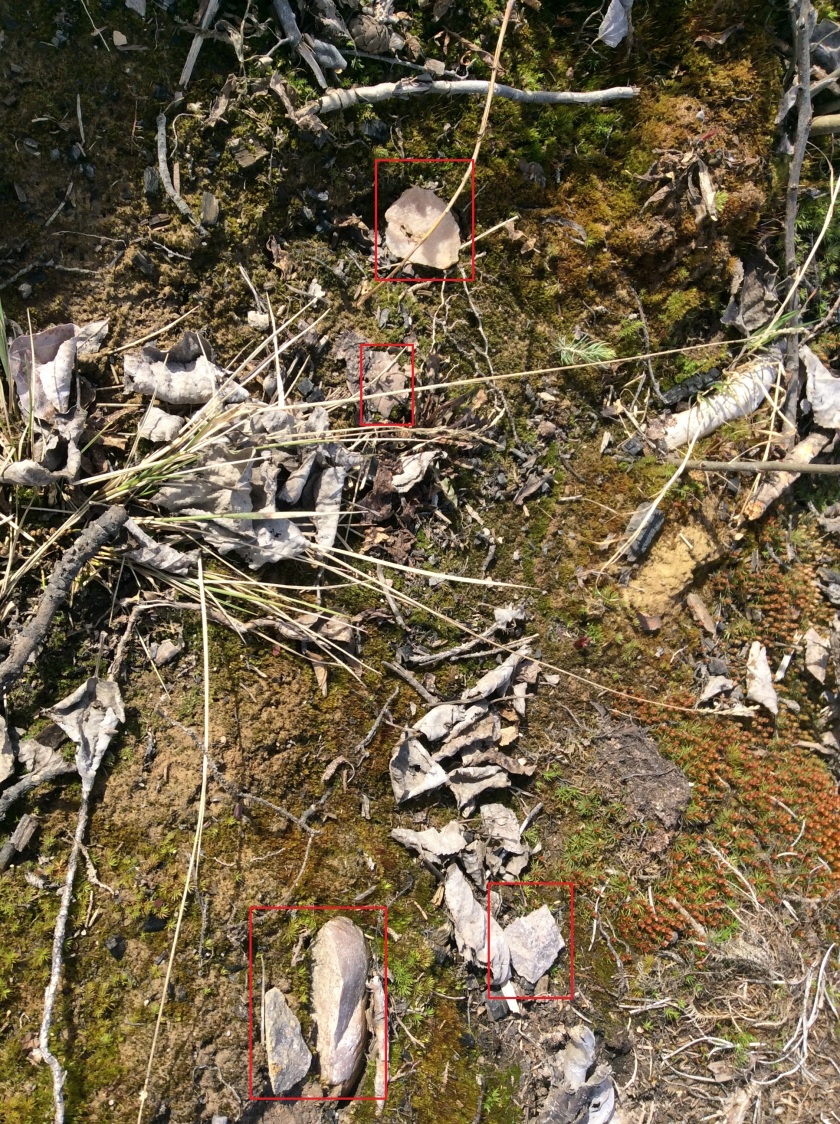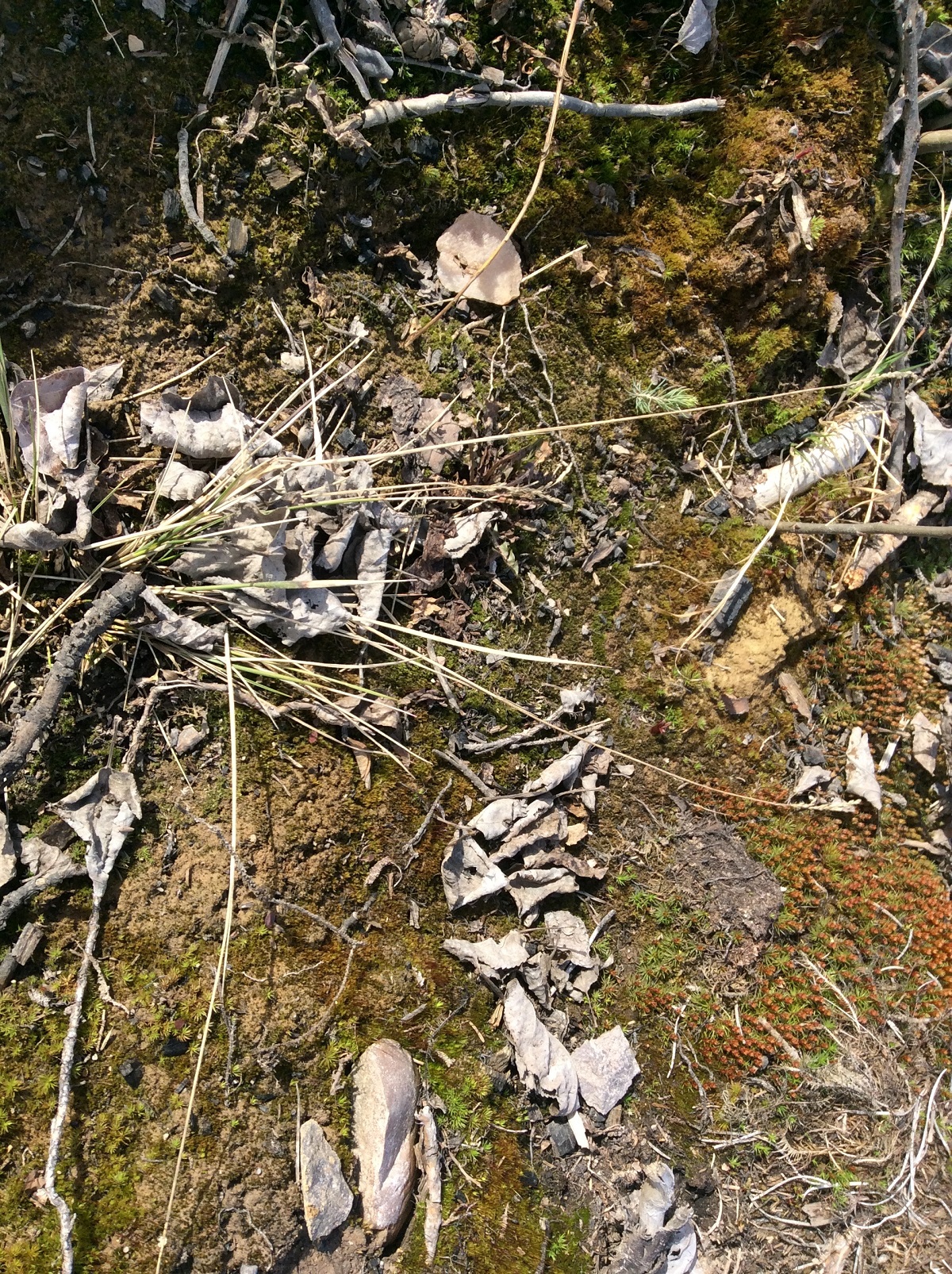While we always prefer to survey areas prior to any impacts, the identification of artifacts in post-impact contexts can be easier because of large areas of exposed sediments. Instead of targeted shovel tests that excavate a very small percentage of a high potential area, we can potentially see everything that is under the ground. However, the context of anything we find must be taken into account because heavy equipment can break cobbles and create things that look very similar to lithic debitage. If we find an artifact in the track of heavy machinery we need to be careful we are not misidentifying what we call a “tractorfact.”
In spring of 2017, we surveyed a proposed Associated Aggregates gravel pit that was being planned in a recently harvested cutblock . We identified several sites that were within the proposed gravel pit boundary, most of which were first identified by spotting artifacts on the ground. It’s not always easy, as vegetation can trick you into thinking you’ve found something, only to realize it was just a leaf.
If you want to try your eye, try to spot the flakes in the above picture!
How many did you find? Give up?
Keep scrolling for the answer…
It can be pretty difficult to spot because of the leaves on the ground but when you really take the time to look you can see five pieces of quartzite debitage.


